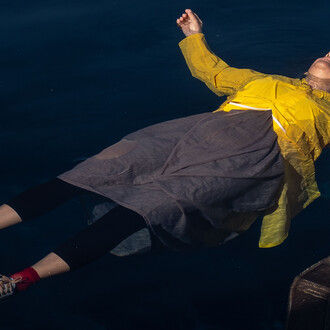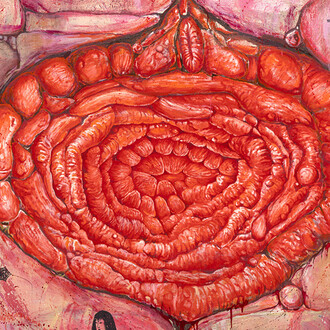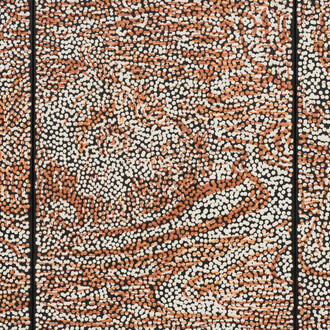To celebrate the opening of its New York Project Space, Gallery Hyundai presents Whispers, a solo exhibition of Jin Han Lee, from May 6 to June 7, 2025. Dividing her time between Seoul and London, Lee captures “untranslatable” moments that only painting can articulate, emerging from fissures between individuals and language, different cultures, and artworks—and arranges them on canvas like tracing the contours of a dream. Following the success of her first solo exhibition at Gallery Hyundai in Seoul in 2024, Lee’s return to New York encapsulates her inclusive vision of painting, which visualizes the most personal and internal experiences in pursuit of the possibility of universal communication beyond structured language.
Whispers transmits the soft caress on layers of emotion, memory, and sensations that characterizes Lee’s practice, in the form of subtle whispers echoing off her canvas. This exhibition encompasses her early works inspired by specific episodes during her time in the UK as well as recent works that feature recurring motifs such as the sun and moon, flower, feet, and trees, foregrounding the “minute sensibilities” that cut across Lee’s oeuvre. The surreal landscapes and ecosystems of metaphors in Lee’s paintings have their own way of surely but quietly permeating the viewer’s senses. Notably in her recent works, motifs densely accumulate and organically intertwine into a ceaselessly metastasizing chain of associations, symbols, metaphors, and substitutions.
These plural movements across Lee’s imagery are articulated through her distinctive brushwork that “pulls” rather than “pushes”—she developed the technique during a VR (virtual reality) residency in 2021 where she experimented with brushstrokes resembling East Asian calligraphy, culminating in a redefinition of three-dimensionality in painting. In doing so, she approached new media environments not as independent territories but as avenue to reawaken her own calligraphic sensibility, and in turn, to broaden her continuing mission to give sensible form to cultural nuances. Lee continues to favor compositions that pull the surface forward, an extension of her ongoing experimentation on pictorial space and the status of painting within contemporaneous conditions since early works. For example, she often employs curtains as compositional tools, leaving the center of the canvas vacant while aggregating detailed depictions, thick layers, and richly decorative linear elements along the edges. This compositional strategy boldly inverts lineal perspective by assigning weight and depth to the edges, in turn generating an inward pull that makes her work tangibly compelling. Furthermore, the contrast between dense edges and simplified color fields at the center recalls vestiges of time and memory and the dynamics of presence and absence.
For Jin Han Lee, painting is not a means to escape everyday life, but a methodology of manipulating its space and time into images, generating new meaning in the process. Time stretches in Ring ring (2019), while in Shower thought in purple (2024), thoughts are suspended, hovering mid-air. In capturing fleeting sensations through painterly vision, Lee recognizes how the alienation from community, connection and understanding of others, and desire for love ironically exist only in the “moment of pursuit,” and strives to grant these simultaneously tragic and comedic senses their own physical form. Such is the language of senses that percolates more profound depths than words—“whispers” that emerge along the process of translating her experiences into the realm of painting. Gradually overflowing outside the bounds of painting, these whispers will grow into murmurs among audiences that stretch into far corners of the world, or whispers that bleed beyond night and day into the dreamtime of two heads put together in embrace, resonating at the wavelength of whoever else may listen.
Jin Han Lee’s new works in this exhibition trace emotional imprints that arise from the entangled flow of time, space, and sensation. Intimate yet universal emotions—such as love, waiting, parting, and regret—and natural imagery mutually reflect and narrate one another in painterly rhythm. The new work They are there (2025), directly facing the entrance, evokes traces of lovers who have already departed or hidden behind the foliage, given form through the movement of air. It invites viewers to explore the invisible emotional footprints that blur the boundaries between past and present, presence and absence. In Midnight blossom (2025), flowers bloom within the unseen time and space of night, conjuring a sense of mysterious encounter. A night of waiting (2025) appears to inhabit a similar world, capturing the emotional weight of waiting for a lover in the solitude of midnight, its sensuality amplified through the growth of stiff grasses and ethereal flowers. Upon this nighttime more luminous and intense than daylight, Lee visually maneuvers the lingering sensations of waiting.
Pong dang (2025) captures subtle movements contained within the brief yet cheerful moment when a small, solid object touches water. Dancing notes (2025) depicts a landscape beyond the veil of reality where plants rise and fall like musical notes, intertwined in a collective dance. As such, Lee’s works traverse discrete times and sensations, visualizing otherwise invisible emotional currents through her signature palette and brushwork. Also on view are The real place (2024) and Buds and flowers for two (2024), which demonstrate fluid modulations on her key motifs. If her early works conveyed love through the warmth shared from one foot to another, her recent works forego discrete subjects in favor of botanical imagery brimming with the clamor of life itself. As if to gaze upwards through the eyes of a single blade of grass, viewers are summoned into a world where petals and celestial bodies loom side by side on the horizon.
















